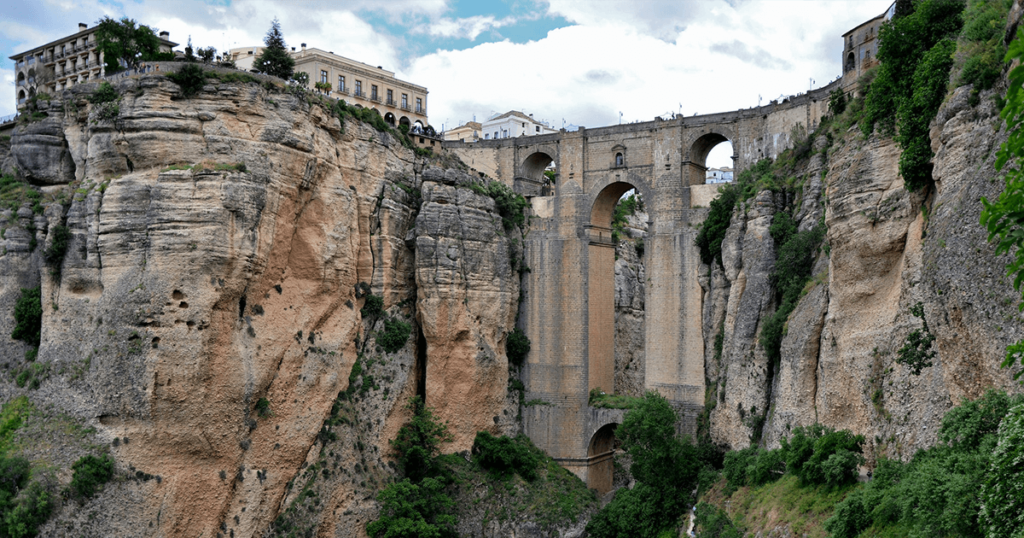
An old stone acueducto and an old stone puente can look a lot alike, especially from afar. In explaining the difference, you might mention purpose, one an aqueduct for transporting water, the other a bridge for conveying people. The Puente Viejo and the Puente Nuevo in Ronda in Andalucía, and the Acueducto de Segovia are examples.
On the eve of a national holiday, though, your mind on leisure, you’ll talk instead of an extra day picked up when a Tuesday or Thursday holiday becomes a four-day weekend or, even better, when two holidays and a weekend coincide to give you a five-day block of freedom. Four days is a puente, five an acueducto. The best shot at either is in December, when on the 6th the Spanish celebrate the Día de la Constitución and on the 8th the Día de la Inmaculada. Were either to fall on a Wednesday, some lucky Spaniards, almost certainly teachers and their pupils, would be looking at an acueducto. This year, with the 6th on a Thursday, it’s a puente that some will celebrate even more than either of the two fiestas.
Twenty years ago, when I was new to Spain, and first heard these terms for long weekends, I was charmed, both by the words and by the almost giddy pleasure that came with the extra day of leisure. It was a baker’s dozen, but instead of an almost imperceptible extra one thrown in, it was a doubling, and all gift, no cost. That was worth taking note of. Yet it was not uncommon, but almost a given. Even nowadays, despite pressure from disapprovers, the Spanish regularly indulge this custom. My dentist, my hairdresser, my boss—all closed for the puente in November, and again for the puente in December.
Pressure to reform has come from workers who, either unable or unwilling to take the extra day to make the puente, would prefer to have the holiday moved to a Monday to tie a midweek holiday to a weekend. The business folk are on their side, complaining that even if businesses are open during a puente, workers slack off. Others, however, want the Thursday holiday on Thursday so they can grab the extra day. The tourism industry is with them. The Church wants the holidays celebrated on the holidays. The government, agreeing to the reform, has yet to enact it, and once again in 2018 tradition won, fiestas celebrated on the rightful day, not some other, resulting in four puentes. That is exciting, but not dangerous: these puentes are not the kind you can fall from or drive over the edge of, they will not wash out from under you and cast you to your death. The view from the middle of one is pretty nice. But like the old stone puentes and acueductos dotting Spain, they are best at a slight distance, when looking back with a sigh, or better yet, when you are about to set foot on one.

